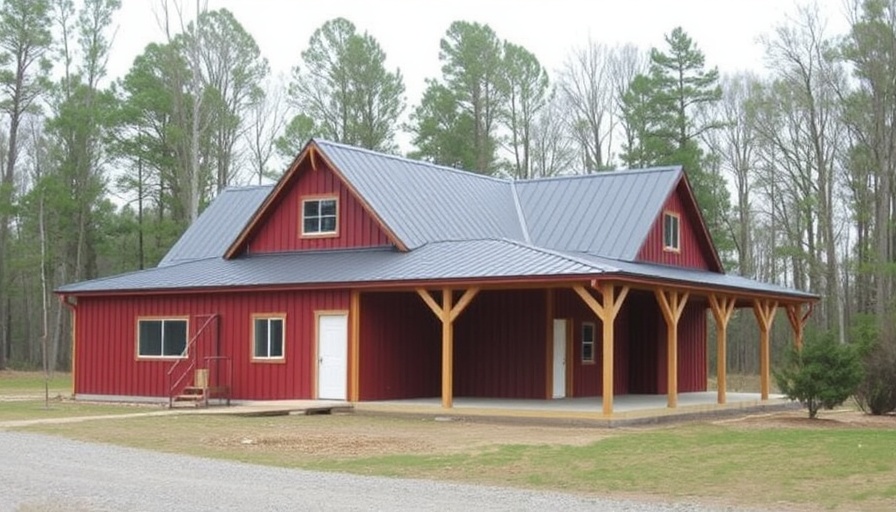
Understanding Different Roofing Types: The Key to Smart Choices
When it comes to roofing, not all options are created equal. As homeowners and builders weigh their options, the choice between standing seam roofing and standard metal roofing becomes crucial. Standing seam roofs offer aesthetic advantages and durability, whereas standard metal roofs often provide more affordability and ease of installation. By understanding these differences, you can make an informed decision that not only meets your needs but also complements the long-term sustainability of your building.
What Sets Standing Seam Roofing Apart?
Standing seam roofing is characterized by its concealed fasteners and interlocking panels, creating a striking appearance while enhancing weather resistance. The elevated seams provide effective drainage and can be made from high-quality steel or aluminum, promising a long lifespan with minimal maintenance. This style is particularly favored for its architectural appeal in both residential and commercial applications, making it a valuable choice for those who prioritize aesthetics and performance.
Exploring the Standard Metal Roof
Metal roofs have become increasingly popular due to their versatility and durability. They can be made from various metals, primarily steel, and come in numerous styles, allowing for customization of pitch and design. Standard metal roofs are often less expensive and easier to install than their standing seam counterparts, appealing to budget-conscious builders. Moreover, they can be finished with different coatings, such as popular PVDF systems known for their unparalleled durability. Understanding these choices is essential for defining the best roof for your project.
The Hidden Value of Choosing the Right Roof
Choosing between standing seam and standard metal roofing not only affects immediate aesthetics but also impacts long-term sustainability and cost-effectiveness. Standing seam roofs generally offer better weather resistance and may provide tax incentives depending on local regulations for energy-efficient construction. Meanwhile, standard metal roofing can be an excellent option for those looking to minimize initial costs. Evaluating the lifecycle costs of both types will lead to better overall investment decisions.
What Your Roof Says About Your Commitment to Sustainability
In today's construction landscape, sustainability is paramount. Selecting a roofing material like standing seam systems, which utilize recycled materials and can be easily integrated with green technologies such as solar panels, demonstrates a commitment to environmental stewardship. As sustainability becomes a top priority for home and business owners alike, understanding the implications of roofing choices is essential for aligning projects with green building standards.
With this comprehensive analysis of standing seam and standard metal roofing, understanding your options can empower you to make better decisions that align with both your aesthetic preferences and sustainability goals. If you are considering a roofing project, take the time to evaluate these critical factors. For more insights and the latest trends in construction technology and sustainable practices, subscribe to our newsletter.
 Add Row
Add Row  Add
Add 




Write A Comment